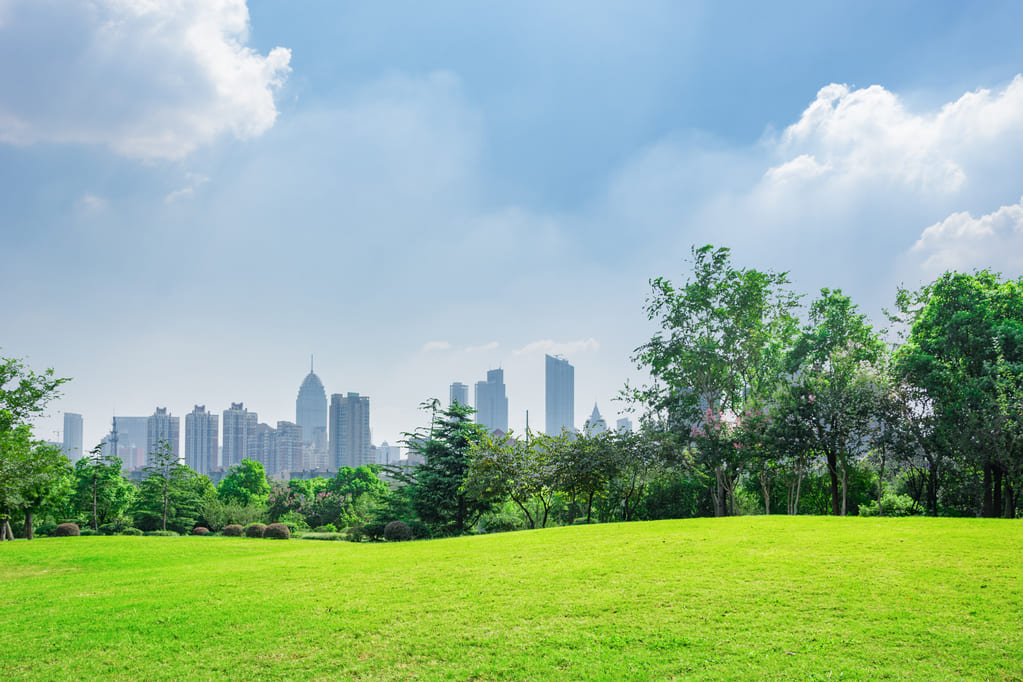Have you ever been on a walk and crossed from an urban area into a large park or the woods? Almost immediately, the temperature seems to cool, the loud city noise dissipates, and you can finally take a deep breath and relax. There’s a reason why green spaces are key to any urban planner’s development. Spending time outdoors in green spaces has massive benefits to humans both mentally and physically.
From an environmental standpoint, trees in green spaces detoxify the air, improve air quality by adding oxygen into the air, and sequester carbon. This fresh air improves respiratory health and being around nature can strengthen the immune system. Green spaces promote biodiversity, supporting habitats that might otherwise struggle in a dense urban environment. Vegetation reduces stormwater runoff onto the road and provides a natural filter for rainwater, improving water quality. Additionally, trees act as a natural sound barrier from city noises, which creates a peaceful environment that many seek. Trees provide shade and can lower temperatures 5-10 degrees from the heat islands created by concrete buildings and roads in cities.
Green spaces simply make it easier to be outside for longer periods of time and promote an active lifestyle. At home, you might sit in front of the TV for hours on end, but at a park, you are more likely to play a game with friends or walk around. This improves cardiovascular health. A more active lifestyle can lower the risk of diabetes, high cholesterol, blood pressure and reduce obesity. Exercise releases endorphins and improves sleep, which contributes to overall well-being.
Apart from the physical aspect, green spaces have been linked consistently to mental health benefits. Green spaces allow for relaxation in a peaceful, quiet environment, and reduce distractions and decisions around simple things like dodging traffic or stopping at crosswalks. This may not seem like a big deal, but being able to clear the mind on a walk with a given path to follow is greatly beneficial to reducing anxiety. It promotes mindfulness and being in the present moment. Cognitive function improves when the mind is given a much needed break. Walks improve concentration, focus, and can spark creativity. People who spend time in nature enjoy reduced stress with lower cortisol levels, and report elevated moods and higher levels of happiness.
So as the cold winter approaches, resist the urge to stay cooped up inside. We all need our daily dose of Vitamin D and fresh air. Here are a few ways to stay active outdoors, specifically in the winter:
- Make time to go for a walk when it’s bright out. Since the sun sets early, think about going to the park over your lunch break or during a break at work when temperatures are highest during the day.
- Take out your winter clothing and bundle up. If feeling cold is the deterrent from going outside, put on your warm clothes so you aren’t cold. No excuses!
- Take up gardening. Plant some nutritional native fruits and vegetables or join a community garden and meet fellow winter warriors.
- Go on a ski trip or ice skating, or join an outdoor sports league in the winter.
Keywords: #green spaces #winter #mental health #carbon reduction #physical health
